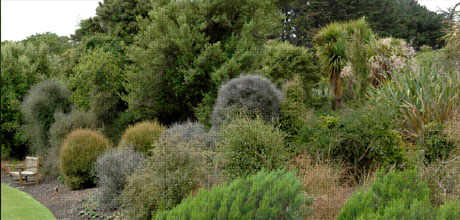Divaricating Plants in New Zealand
This article was first published on 09 Dec 2010.

Divaricating Plants
The flora of New Zealand is amazing, it constantly fascinates me. Did you know that around 80% of native plants do not grow naturally anywhere else in the world?
Another interesting thing about New Zealand native plants is their growth habit. New Zealand’s flora includes a high incidence (about 10%) of plants of divaricate habit. Simply put, this growth habit produces small leaved plants with tough and wiry interlaced branches that grow in a zigzag pattern. Divaricate literally means “to branch at wide angles”.
Some divaricates are shrubs such as Muehlenbeckia astonii and Corokia cotoneaster. Others are juvenile forms of trees which start their life as shrubby divaricates before developing the more conventional ‘straight’ habit of maturity, Sophora microphylla (kowhai) and Pennantia corymbosa (kaikomako) are good examples of these.
Interestingly it is not known exactly what it is about New Zealand that has caused this high rate of divarication in our flora. Theories include protection from moa-browsing and protection from climatic extremes. Whatever the reason, we as gardeners have been provided with a group of plants that have a wonderful architectural form and year round appeal.
- Divaricating plants occur across a wide range of habitats
- Divarication is not specific to particular families or genera; there are many with species that do divaricate and species that don’t.
- Many of our divaricate species display colourful stems, adding even more interest to their architecture, especially in winter.
- The Divaricate Plant Collection is located by the lawn of the Native Plant Collection in the upper botanic garden.
Shirley Stuart is curator of the Native Plant Collection at Dunedin Botanic Garden


